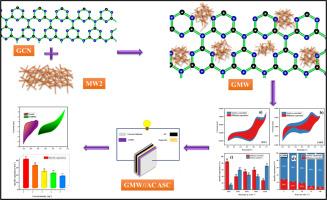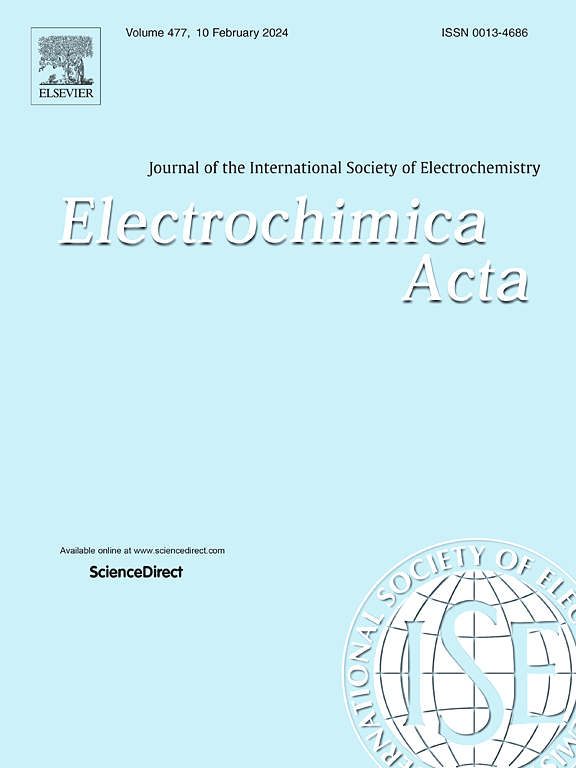g-C3N4 Modified MnWO4 Nanorods as High-Performance Electrode Materials for Asymmetric Supercapacitors
IF 5.5
3区 材料科学
Q1 ELECTROCHEMISTRY
引用次数: 0
Abstract
Hybrid nanostructures are transformative in energy storage, offering unparalleled internal and surface properties. However, diffusion-controlled supercapacitors often face challenges like low energy density and poor cycling stability due to sluggish intercalation/deintercalation processes. Here, MnWO4 nanorods integrated with graphitic carbon nitride (g-C3N4) overcome these limitations by enabling a transition from diffusion- to surface-controlled charge storage. The resulting hybrid material achieves an outstanding specific capacitance of 1265 F g-1 at 1 A g-1, retaining 91% of its initial capacitance after 5000 cycles at 5 A g-1. This exceptional performance surpasses that of pure MnWO4 and MnWO4 synthesised with surfactants like cetyltrimethylammonium bromide (CTAB), polyethylene glycol (PEG), and sodium lauryl sulfate (SLS). Moreover, the g- C3N4-modified asymmetric supercapacitor device (GMW//AC ASC) exhibits a remarkable specific capacitance of 77.24 F g-1, an energy density of 34.7 W h kg-1 at a power density of 899.9 W kg-1, and an impressive 90% retention after 5000 cycles. These findings establish g- C3N4-modified MnWO₄ nanorods as a benchmark for designing advanced electrode materials, unlocking new potential for renewable energy storage technologies.

求助全文
约1分钟内获得全文
求助全文
来源期刊

Electrochimica Acta
工程技术-电化学
CiteScore
11.30
自引率
6.10%
发文量
1634
审稿时长
41 days
期刊介绍:
Electrochimica Acta is an international journal. It is intended for the publication of both original work and reviews in the field of electrochemistry. Electrochemistry should be interpreted to mean any of the research fields covered by the Divisions of the International Society of Electrochemistry listed below, as well as emerging scientific domains covered by ISE New Topics Committee.
 求助内容:
求助内容: 应助结果提醒方式:
应助结果提醒方式:


